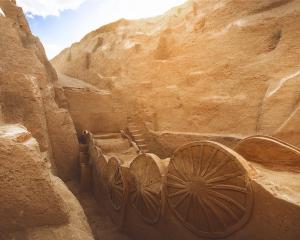I've been slow to the world of emoji but something has happened and I have found myself engaged in a full-blown emoji orgy, trying eagerly to weave these strange pictorial characters in and out of text conversations.
It has become a personal challenge to replace words in a text message with appropriate emoji. I have been fascinated by the default selection of pictures that are on offer and similarly what is not on offer.
Where's the motorcycle emoji and why is Santa the only emoji human with facial hair? Emoji are the contemporary manifestation of hieroglyphs.
There is a truly human instinctual urge to communicate with images, the representation and meaning is tied up in its use and the context in which it is presented. Why do we universally acknowledge that a symbol for a toilet is a picture of a male or female?
What happens when you don't identify as either? It is an unstated visual code and language that denotes various forms of culture and sometimes even stereotypes.
It has always been intriguing to see how we use picture communication to tell stories or imply meaning.
Part of the origins of picture communication must be credited to Otto Neurath, a member of the Vienna Circle of philosophers in the 1920s who, with Gerd Arntz, pioneered a system known as Isotype (International System of Typographic Picture Education).
Complex data was represented by images with the express intention of cutting through language and literacy barriers that often prevent the spread of information.
Neurath's designing of information was revolutionary and enabled other forms of communication and design culture to thrive, particularly in the area of infographics, in which disjointed or hard-to-decipher data is simplified within a graphic composition.
Emoji were used in public health and safety messages by the New Zealand Police during the Rugby World Cup in an attempt to curb poor road-related behaviour, and potentially capture the attention of a younger smartphone-toting audience.
There is power in pictures. At a recent design department social function a work colleague noticed that the industrial hand-soap dispenser in the restaurant had been filled with soap that was incompatible with its model.
I too was perplexed by this banality of life.
''What?'' I replied.
''Well, there's no wrong-soap-in-the-soap-dispenser emoji.''
And we joked how this was totally unacceptable and discussed how we might go about communicating ''soap-gate'' to the rest of the world.
Emoji seemed like the only way; it was a tricky mix of pictures. But combinations of emoji can communicate complex narratives or codes.
Another work colleague and I have an accepted three-emoji combination that means please plunge me some coffee.
Some creativity is required if you choose to only communicate in images, coupled with some form of universal acceptance from the recipient in regards to the meaning relative to timing and context of the message.
Soap-gate was obviously not a big deal, but it did make me think about how we use pictures to solve design problems that are often bound to social, economic, environmental and political issues.
This was driven home while doing some heavy reading in regards to the Syrian refugee crisis: the sheer numbers of people who are displaced and spreading across Europe and surrounding areas are hard to imagine and sobering.
Among the turmoil there was a symbol that emerged in the breaking of the crisis with the sole intention of communicating support for displaced Syrians in foreign areas.
The Syrian refugee welcome sign is a heart with an arrow pointing inwards, creating its own visual culture in the wake of a humanitarian crisis that cuts through the constructs of language. The use of a heart as a universal symbol of love within the realms of pop culture is already established.
It requires little interpretation and has experienced many manifestations. One iteration is the use of <3, which has been used to communicate love, in a rotated format. However, the meaning is not exclusive. Anyone with a head for numbers might decode this as ''less than three''.
Other representational meanings might include: <3, a certain part of the male anatomy; <3, a big nose; <3, a double-scoop ice cream; <3 could even symbolise New Zealand's Syrian refugee quota or the inability to act decisively in response to the crisis.
The power in picture communication is the agency the viewers have in deciphering the message under their own terms.
Now, how do I communicate why is there no picture of our current monarch on the redesign of the New Zealand $5 note in emoji.
Leigh Paterson is a lecturer in communication design at Otago Polytechnic.













